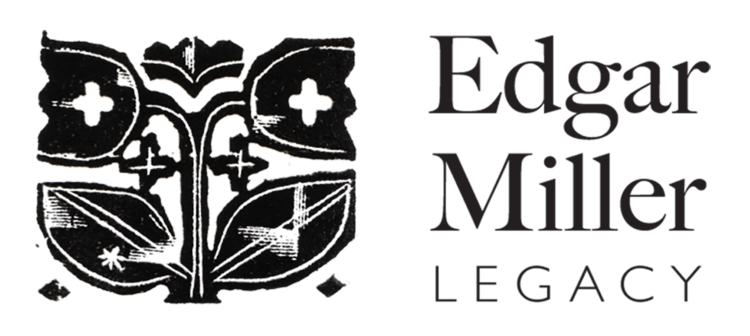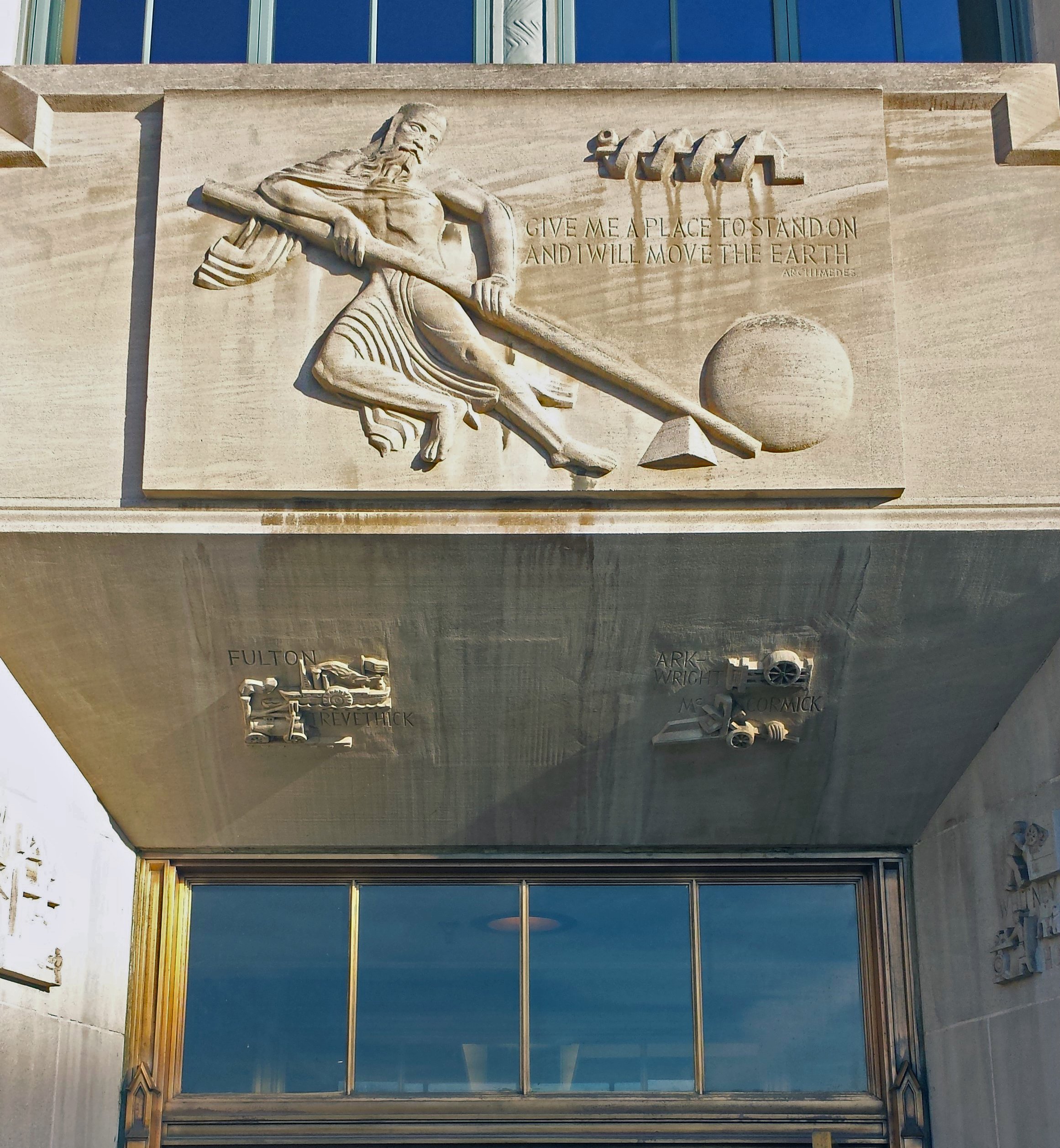Northwestern University Technological Institute
Evanston, Illinois
1942
Relief sculptures designed for Holabird & Root
Edgar Miller’s love of using his art to show history and nature came in handy when designing the ornamental elements at the Northwestern University Technological Institute. By the 1940s Miller was known for his prodigious talent of condensing complicated historical and scientific subject matter into beautiful statement pieces. The architectural firm of Holabird & Root was no stranger to Edgar Miller’s work and had hired him for many previous projects. At the Technological Institute, Miller used relief sculpture and ornamental design to tell the dynamic story of scientific discovery in decorative limestone bas-reliefs. Miller excelled at celebrating and evoking human ingenuity regardless of how abstract the prompt may be.
Holabird & Root designed the brand new Institute—soon after its completion known as the “Tech” building— to highlight the very latest in architectural engineering. The university demolished an old gymnasium and fraternity house to make space for the Tech building adjacent to Lake Michigan. The Tech was designed in a symmetrical pattern which can be seen when viewing the building from overhead. Considering the building would be dedicated to experimental engineering, the architectural engineers paid meticulous attention to every aspect of the construction, with over 6,000 detailed letters sent between the subcontractors and the firm, prescribing details down to even the material, form, and layout of laboratory chairs for optimal use by researchers. The Tech was finished in 1943 with 350 rooms, an auditorium with 774 seats, as well as lecture halls, libraries, and offices.
Holabird & Root explicitly wanted to incorporate an updated sense of Gothic elements to reflect the older lecture halls, library, and churches on campus. Miller’s sensibilities for marrying the medieval with the modern was a perfect fit for the task.
For the exterior, Edgar designed figurative bas reliefs depicting the great firsts of invention and discovery, going back to the first fire and to the first human to use a millstone to grind grain. Miller depicted figures in action. He also designed a set of copper medallions positioned all around the building’s exterior on its north, west, and south sides showing the elements of fire, water, air and wind.
The sculptures at the Tech building were a prelude to the work Miller would do for Frank Furedy, a mechanical engineer and the owner of the Glasner Studio in the 1940s. Furedy hired Miller around this same time (perhaps after recognizing and admiring Miller’s work at Northwestern) to create a similar history of science and technology in carved and painted wood for a new ceiling in the Studio’s Arts & Crafts-styled sitting room.
On the west-facing courtyard around the main entrances Miller created large relief designs carved in Lannon stone that depict famous engineers and scientists up through the modern era. The doorways are also decorated with various mathematical symbols and scientific instruments. While the carvings were initially credited to Jon Jonson, further research by Dr. Marin Sullivan revealed that Sylvia Shaw Judson did most of the execution of Miller’s designs.
Above: Detailed bas relief sculptures in limestone decorate each entryway, and carvings line each door below. The upper image shows Archimedes and the lower image Vitruvius. Each vignette includes a quote attributed to the inventor.
Below: Smaller reliefs are placed by the doorways, each representing a famous engineer or inventor.
The interior lobby of the Tech building displays large-scale sculptural pieces of modern industrial engineering systems and inventions. These pieces designed by Miller line the hallway entrances to the north and south.
Today the Tech building is home to the McCormick School of Engineering. Colonel Robert R. McCormick and his foundation were the main patrons of Tech’s construction. Edgar Miller and the architect Andrew Rebori created Colonel McCormick and his wife Amy’s tomb and memorial.












